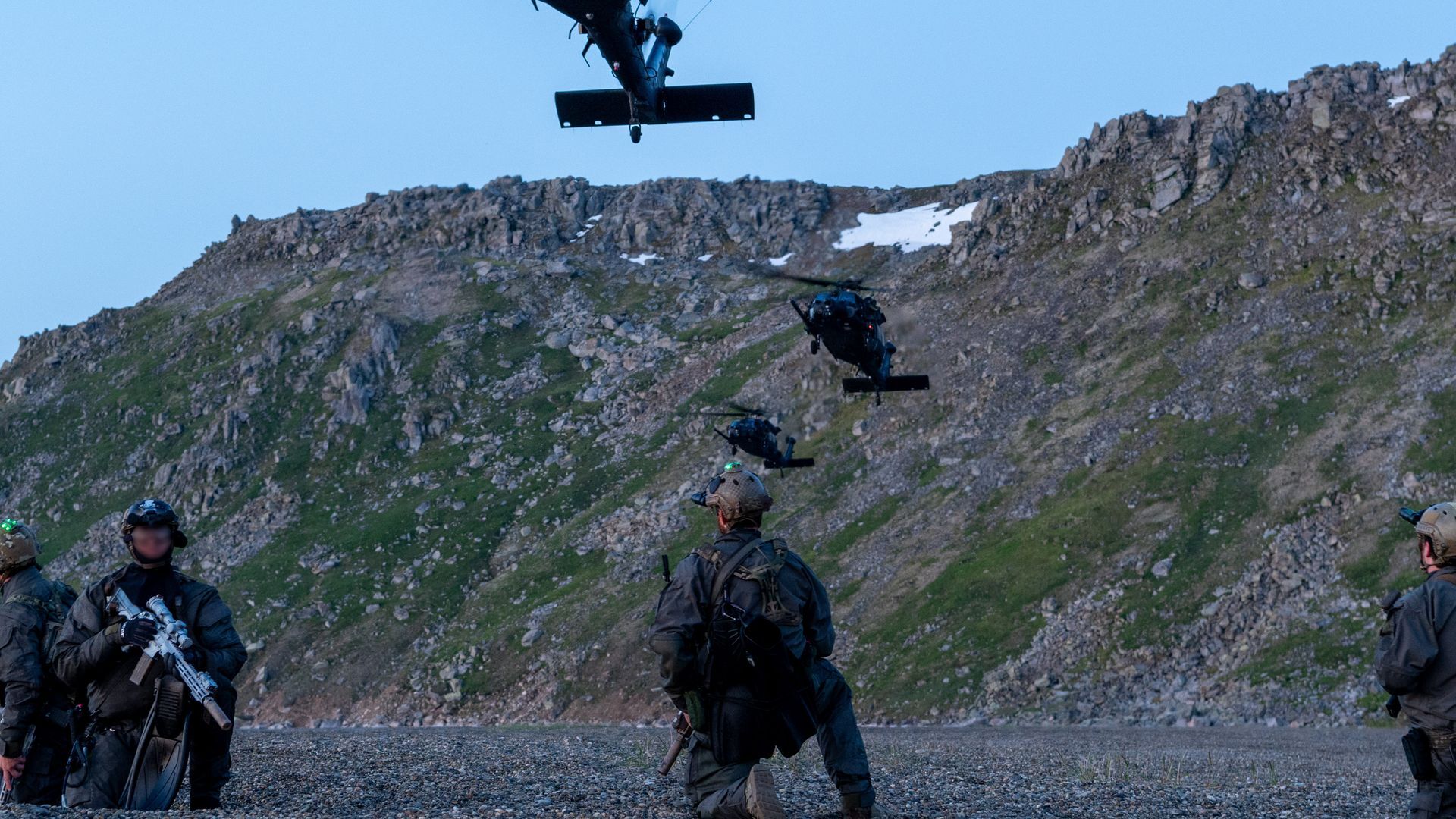
Things are heating up in one of the coldest places on the planet–literally and figuratively.
For the better part of July and into early August–some of the most elite special operations forces in the us military took part in an exercise known as Operation Polar Dagger.
The exercises are meant to test the most highly trained US personnel, along with their tactics and equipment, in one of the most unforgiving environments on the planet.
This year’s Polar Dagger exercises are the first since the Pentagon released its updated review of the US Arctic strategy, which calls the region critical to the defense of the US homeland.
“You never just have a training exercise just for the purpose of having an exercise. There’s always going to be a point or a goal.”
Matt Shomaker is a former US intelligence officer. He says the drills are a great chance for US forces to hone their craft, but they also tell regional adversaries that US interest in the Arctic isn’t going anywhere.
“If you remember, during the Cold War, the thought was and actually the plan was, actually – that the Soviets were going to fire their nuclear missiles over the North Pole.”
Units from the army, navy, and air force all took part in this year’s polar dagger exercises…so there was a mix of air, sea, and land assets, like the USS John Canley, one of the navy’s expeditionary sea base ships built out of a converted commercial cargo ship.
The US’ increased activity in the Arctic goes beyond just drills. The Army announced it’s activating a new aviation command in Alaska.
The 11th airborne division–aka the Arctic Angels–stood up its Arctic aviation command at Fort Wainwright–which will oversee two active-duty aviation battalions.
So why is the us itching to get more Arctic assets?
Well, climate change is a factor. There’s less ice in the Arctic, and scientists think the shipping lanes could open year-round soon. Russia and China both want to use those lanes to ship goods to Europe–
but no one in the West or NATO wants to see China trying to throw its weight around in the Arctic like its doing in the South China Sea.
“As a former intelligence officer, i’m always going to be extraordinarily skeptical about what the Chinese are doing because them being a communist country, everything that any organization does in China is technically speaking, meant to bolster and glorify the Chinese Communist Party. At the end of the day, everything that is produced is meant to showcase how wonderful chinese communism is.”
China has scientists positioned at Arctic sites all over the globe–conducting environmental research, which is seen as dual-use–meaning the findings could also be used to benefit the military.
“Anytime there’s dual use, anything, that’s always going to least raise eyebrows and throw up a couple red flags just to take a closer look.”
Studying ionic changes in the atmosphere can help weather prediction–
but the findings can also be used to help missiles better fly through the atmosphere
The data from studying oceanic acoustics can be useful in a number of applications, such as tracking animal migrations or enemy submarines.
While a war with China in the Arctic, Pacific, or elsewhere is not a foregone conclusion–Shoemaker says the Pentagon still needs to prepare for every outcome now.
We have more stories about military interests in the Arctic. You can find all of those at our website, san.com, or on the Straight Arrow News app.
For Straight Arrow News, I’m Ryan Robertson.






